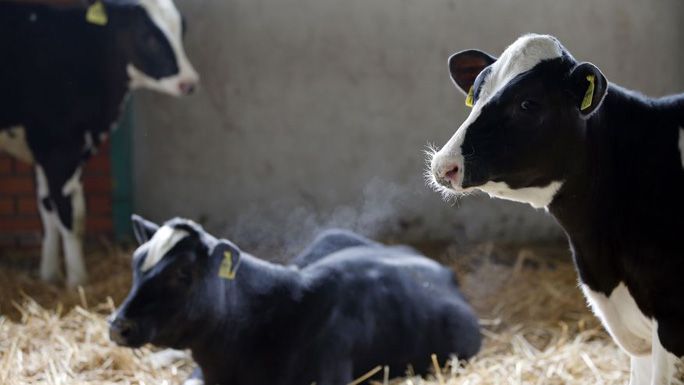Reuters
Aflatoxin is a potent carcinogen produced by the Asergillus flavus and Aspergillus parasiticus molds, which grow on corn, peanuts, cottonseed, milk, walnuts, pistachios and Brazil nuts. The proliferation of these molds and the resulting contamination by the poison they produce occur when crops have been weakened by insects, drought or other adverse conditions, or have been stored improperly.
Aflatoxin, which can cause liver cancer, is transmitted to people through milk products, meats from animals fed contaminated field corn or nut meals, and from peanut butter, cornmeal and grits. In the United States aflatoxin contamination is most common is the southeast in peanuts and corn products. Fresh, frozen or canned sweet corn typically does not contain any aflatoxin.
Both the U.S. Department of Agriculture (USDA) and the Food and Drug Administration (FDA) recognize aflatoxin as a serious health risk, and the FDA has set a tolerance for aflatoxin at 20 parts per billion, which is a very tiny amount. These standards only apply to foods that cross state lines, though. These standards do not apply to foods produced and sold in the same state. Additionally, FDA does allow corn and cottonseed meal contaminated with aflatoxin exceeding the 20 parts per billion level to be fed to livestock.
In the early 1990’s, federal inspectors found that high levels of aflatoxin were present in Midwestern corn and grains grown during the 1988 drought. They subsequently discovered that meats and milk products contained unacceptable levels of this toxin. Despite this, no additional actions were taken to improve public safety. At present, federal law allows up to 300 parts per billion of aflatoxin in corn, peanut products and cottonseed meal fed to livestock. This imparts small amounts of toxins to meats products, and may pose a health risk.
According to the International Food Policy Research Institute, consumption of even tiny amounts of aflatoxin can have a cumulative effect, and can lead to liver damage, gastrointestinal dysfunction, decreased appetite, decreased reproductive function, decreased growth, and decreased production. Due to lack of any federal inspection, actual aflatoxin concentration in animal feed may at times be higher.
While there is some governmental inspection of crops for aflatoxin, industry is largely responsible to self-monitor foods to ensure they are not contaminated with this substance. Of all sources of aflatoxin contamination, the most potentially problematic is grind-your-own peanut butter, an offering available in various food stores. Peanut butter making machines can become contaminated with aflatoxin. The peanuts to be ground may contain the toxin, which can increase during storage. Unless peanut butter machines are thoroughly cleaned daily, they can become breeding grounds for the Aspergillus molds. If you grind your own peanut butter at a store or at home, ask to make sure that the machine is fastidiously cleaned daily, otherwise jar peanut butter is a safer option.
Another tip is to avoid nut pieces. Broken nuts are more likely to contain aflatoxin than whole nuts. And if you encounter moldy, rotten or bitter nuts, do not eat them at all.
Though aflatoxin is a potentially very dangerous agent, you can reduce your risk of exposure by following the above simple guidelines. Fortunately, cases of aflatoxin poisoning from foods are rare in the US. But with droughts and an ever-increasing food supply coupled with a general lack of inspection, vigilance is key to maintaining public safety.


